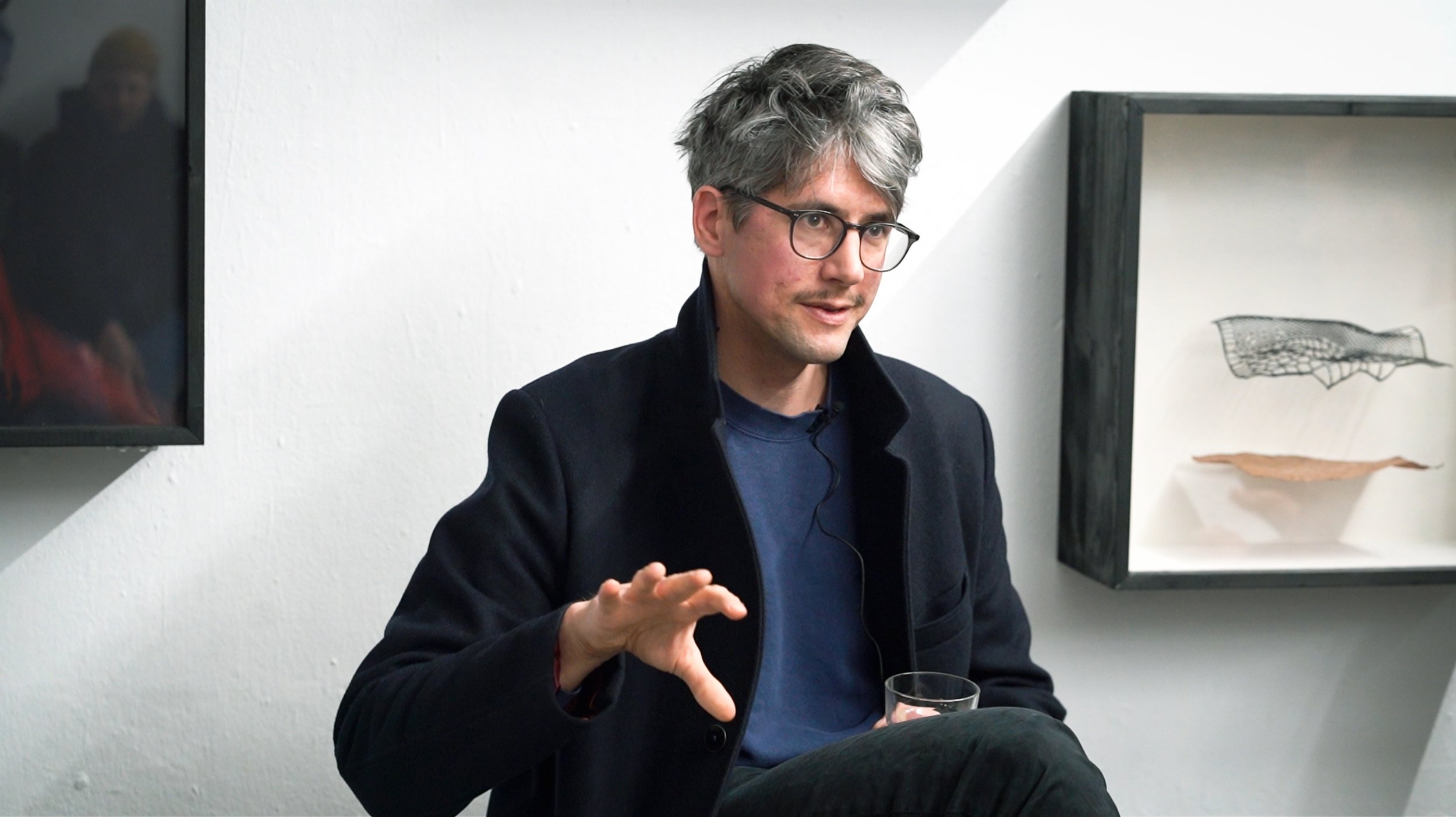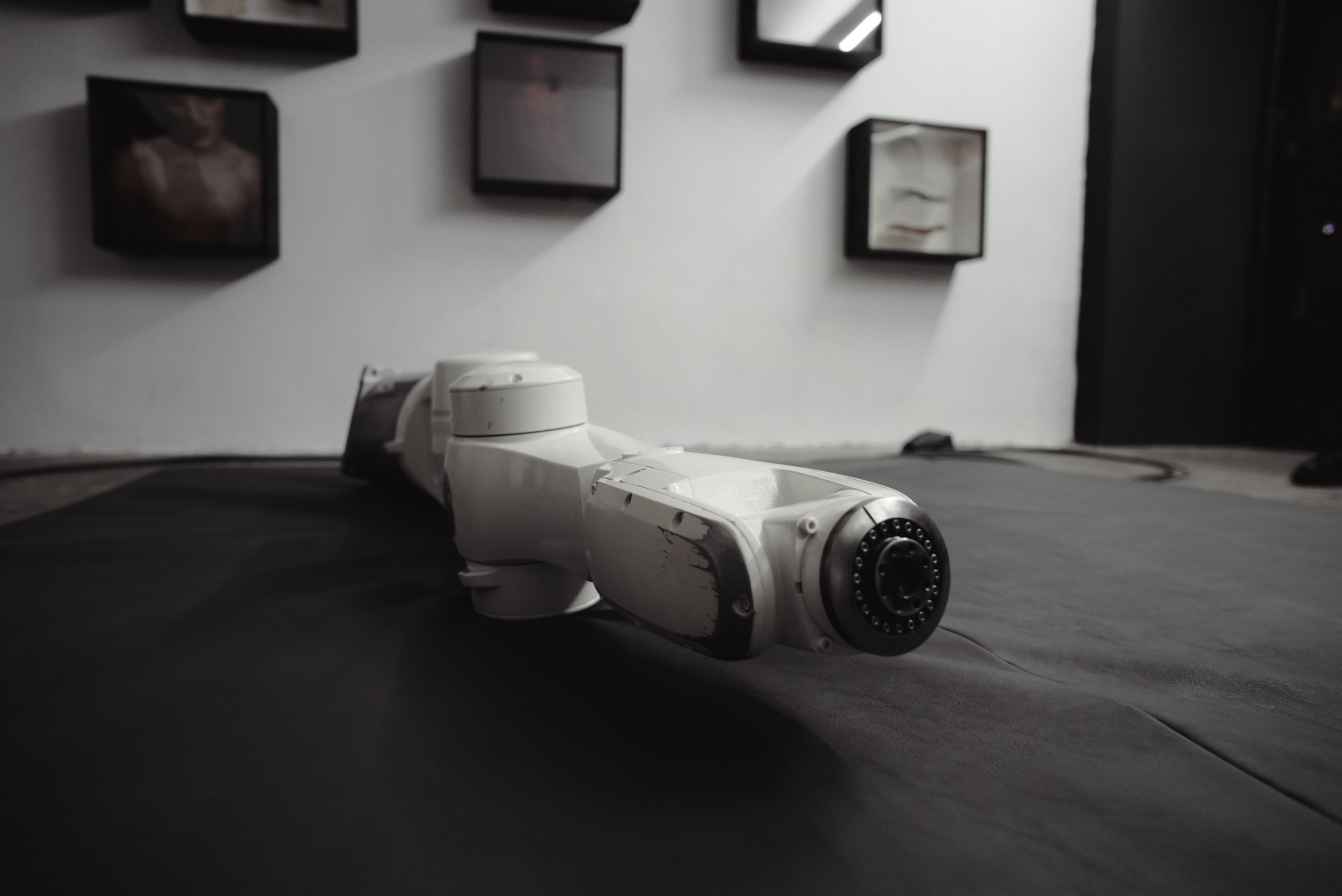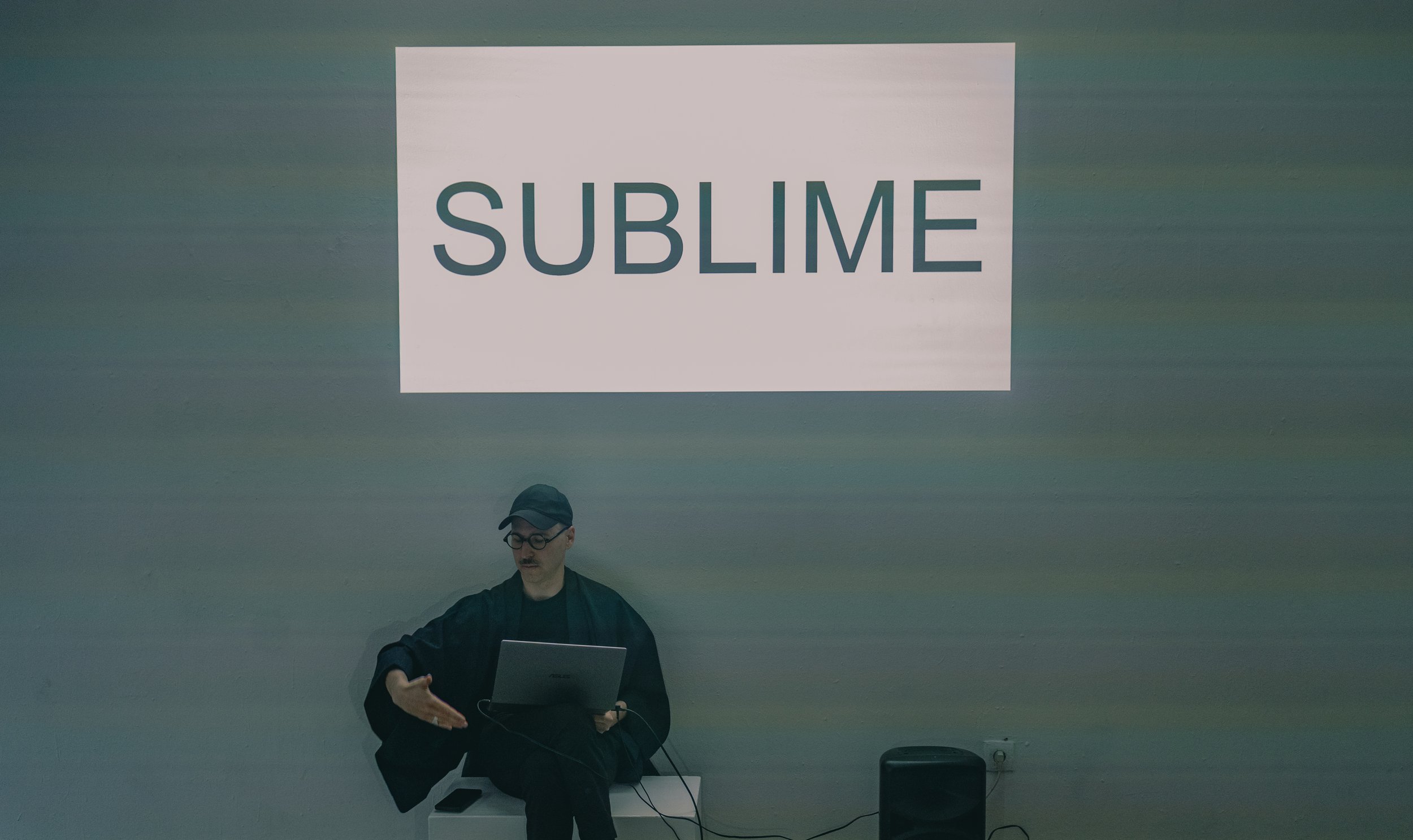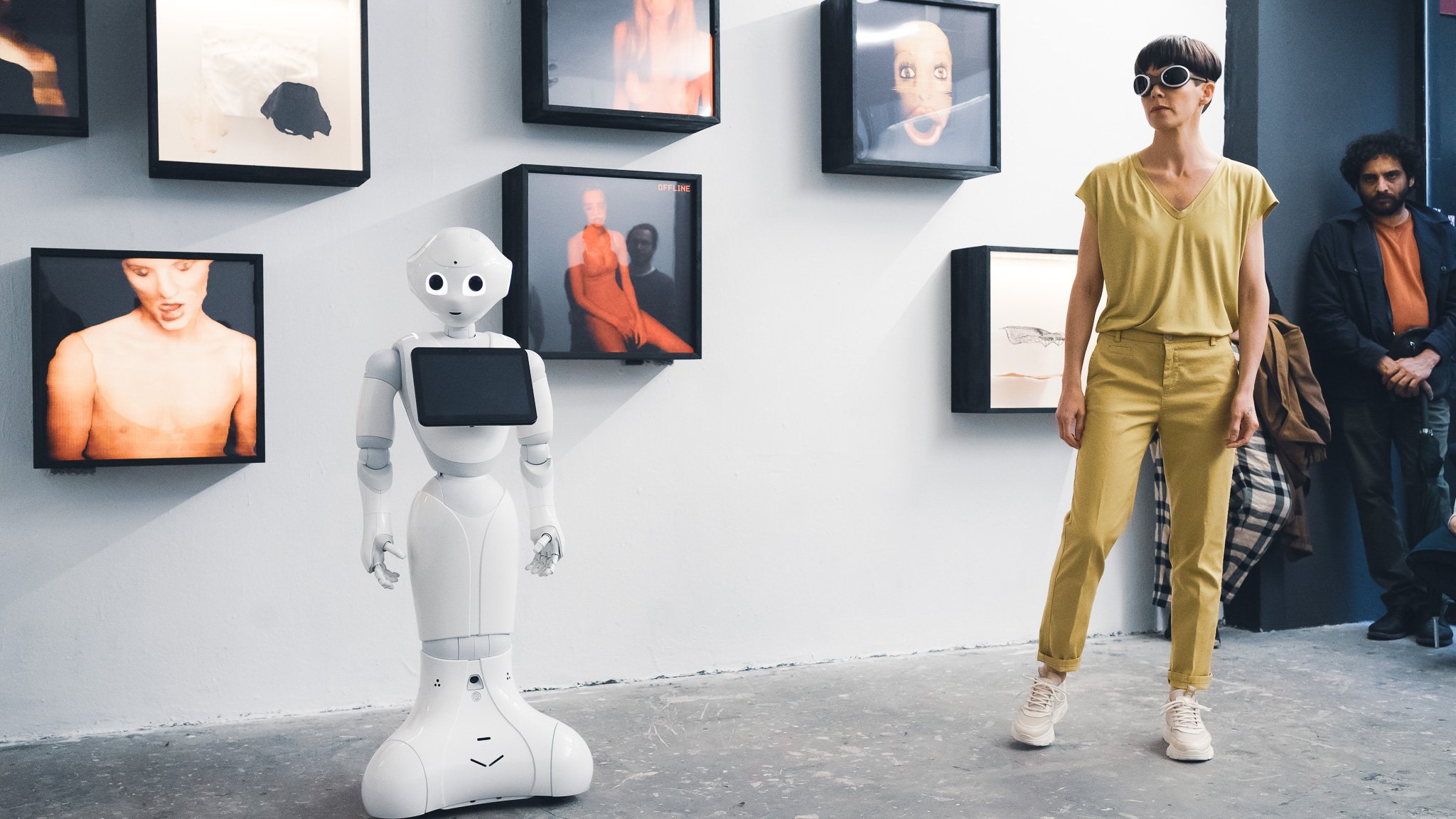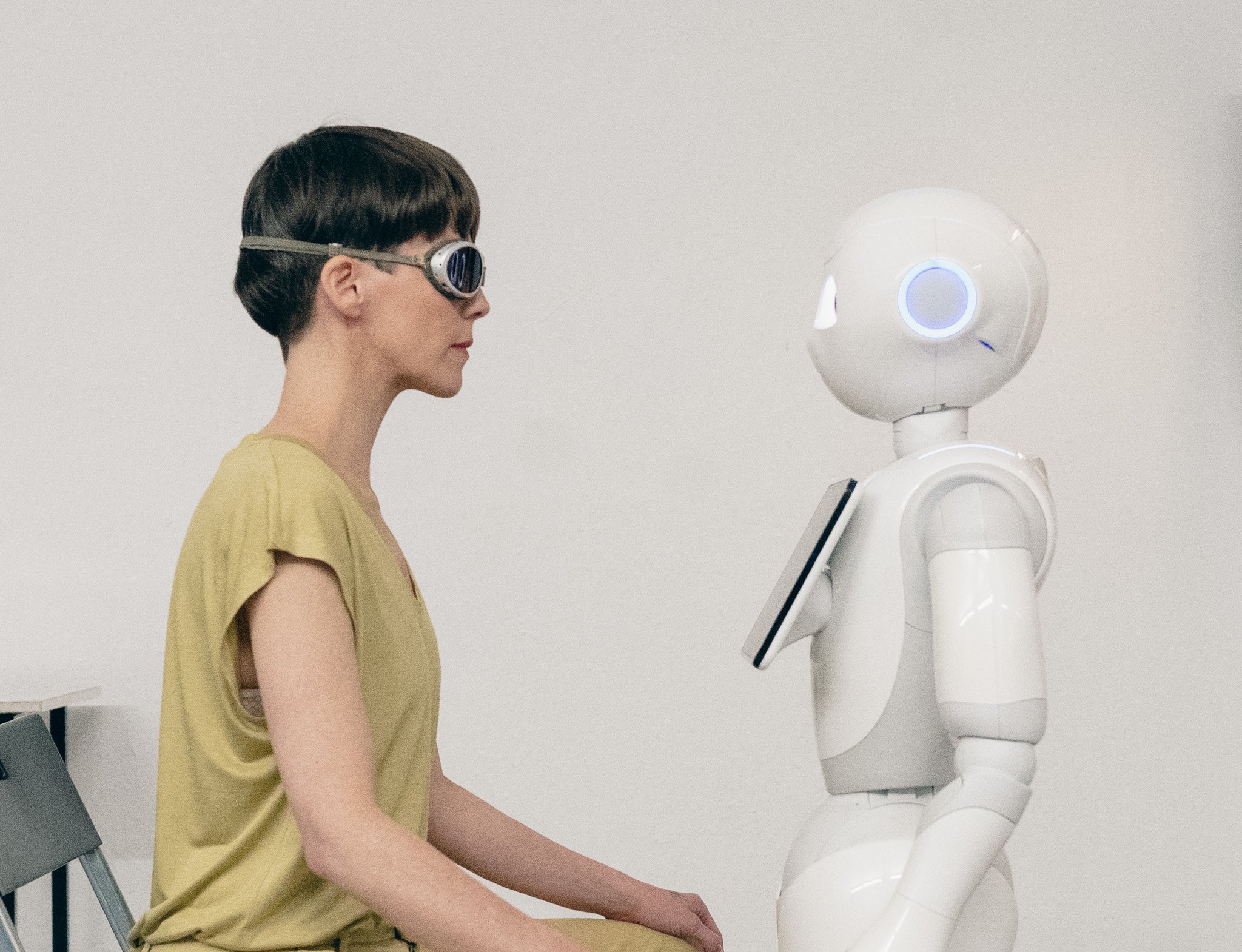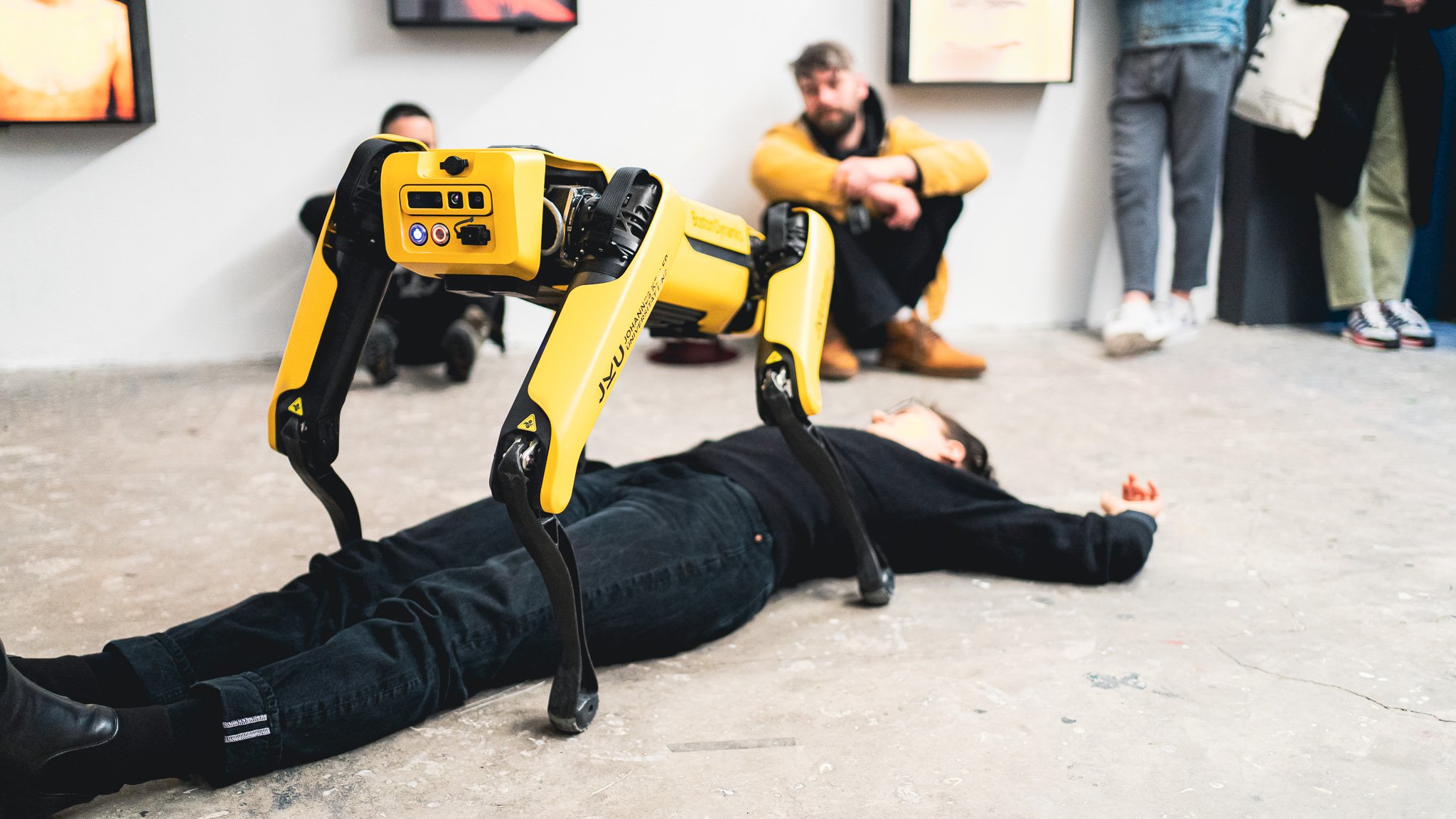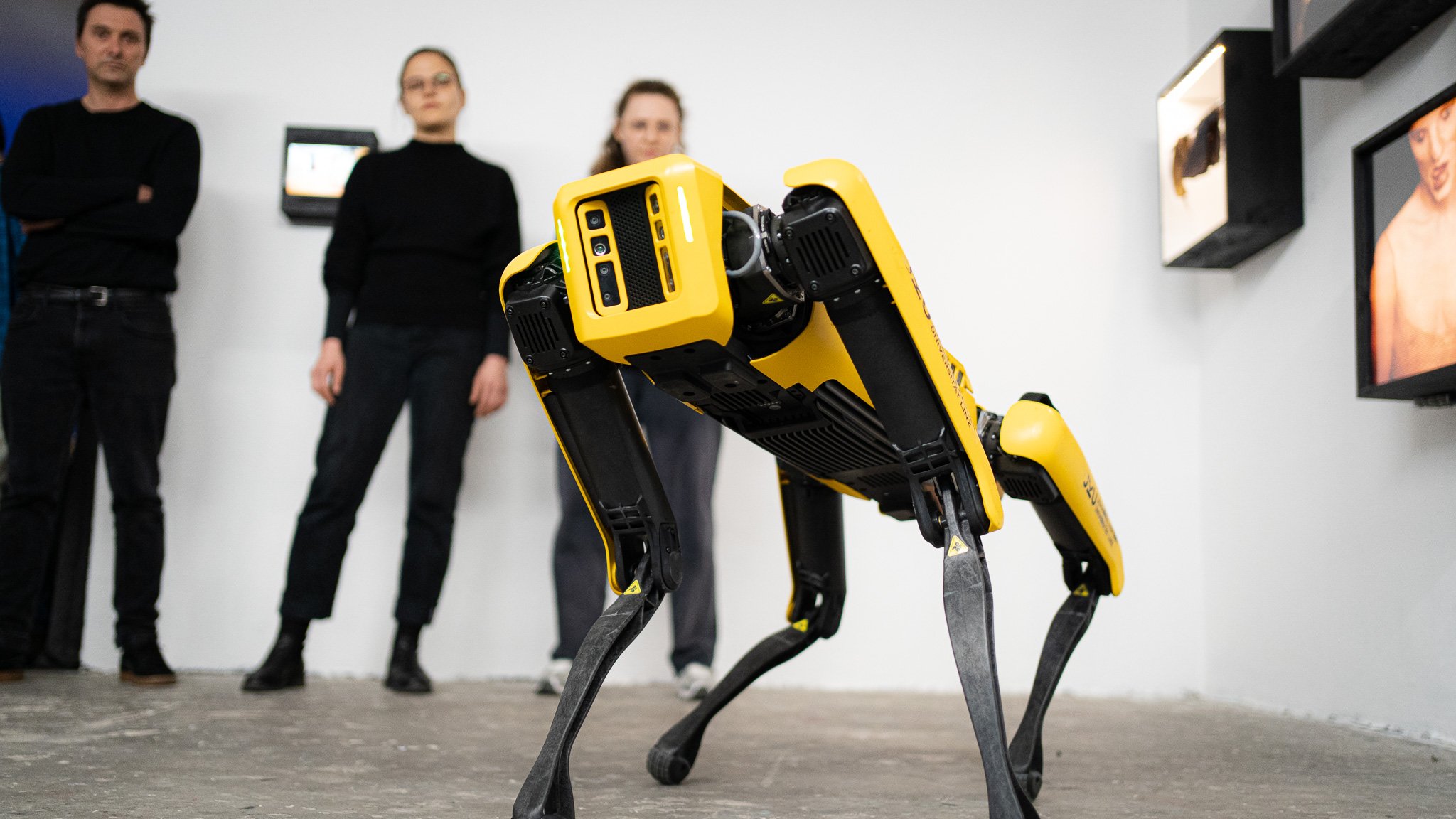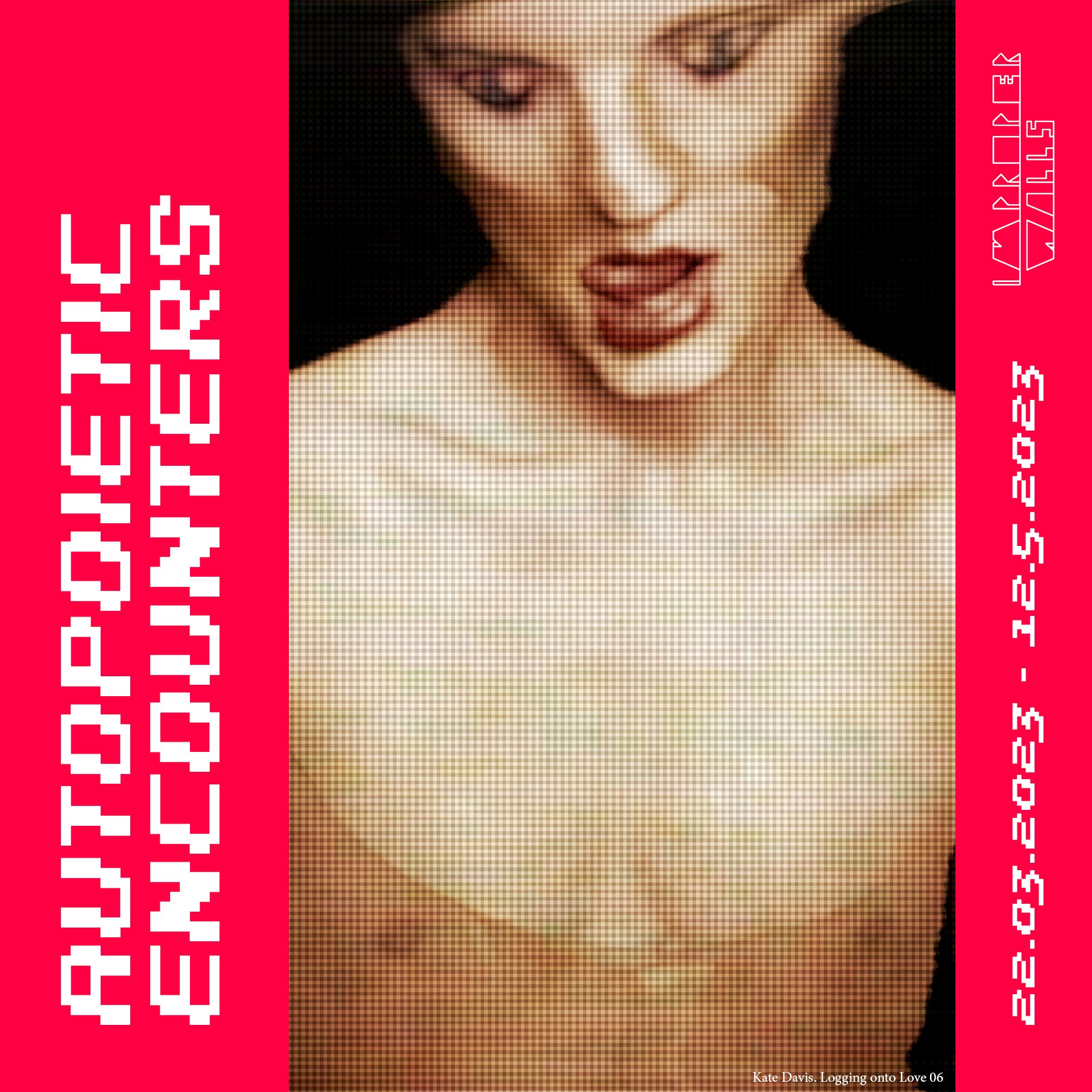Autopoietic Encounters
22.3.-12.5. 2023
Programme
22.3. 6-10 PM exhibition opening: Kate Davis, Fashion and Robotics
30.3. 7-9 PM performance & artist talk: disarming by Emanuel Gollob
20.4. 7-9 PM performance & artist talk: Mimicry by DIGI-Sense project: daniela brill estrada, MarkoMarkovic and Laura Stoll
28.4. 7-9 PM performance & artist talk: youAI-I3-01 by H.A.U.S. transdisciplinary research: Eva-Maria Kraft, Linda Pichler, Oliver Schürer, Darja Stoeva, Robot Machina
5.5. 7-9 PM art talk. Conversation with Mit Borrás: AI LOVE
Please find the detailed programme in the handout.
i-Robot [2]
(For Nathan Riggs)
I recognize the mind
of this robot. It sees
what I see; it gets what I
get; it wants what I
want: the creative poet
making, the technical skill behind
it, combined in it, emerging in
and through it, in every connection,
in every bolt and wrapped wire.
Rhetorically, I see what it sees; I
get what it gets; I want what it
wants. I recognize the mind
behind this robot: it is mine
At the end of some 40-year-old book about robots, the following brain game goes something like this: create (in your mind, of course) your robot. Try to be precise about all its mechanical and intellectual characteristics. Invent a task, imagine the situation in which it would have to work and the principles that would guide it. Then, let him act in accordance with the abilities and principles given. Observe him, and you will find that he will often not do what he thinks he should. You will have to change its structure, its programme, its situation and its principles many times before you get the desired result.
What explains these robots' perceived noncompliance to these principles? What are robots anyway? Are they machines without autonomy, merely a product of different cultures' impulses to find “safe” ways to play God? Are they replicas that fulfill a human fascination with an animated artificiality that emerges from our obsession with our self-image? Or are they simply an outcome of the human wish to be liberated from labor and engage in more pleasurable desires? In this exhibition, we ask these questions from a perspective that aims to facilitate our audience's encounters with artificial embodied agents in the context of autopoiesis.
Autopoiesis is a concept aimed at describing and comprehending a system's material functioning in terms of self-organisation, self-reproduction, and self-realisation of meaning, all of which are necessary for existence. (1) Applied to artificial beings, this concept can be understood in various ways, which we are poised to investigate through the performances, artworks, and conversations in this exhibition. We explore how robots and humans can continue to co-exist as subjects and objects while unprecedented types of human-machine collaboration emerge from this symbiosis. However, at the same time, we speculate on imaginaries and potential consequences of artificial beings that potentially escape the Vitruvian shackles of their anthropomorphism.
With the curated artworks, we open the dialogue on robots' role while exploring robot-human coexistence. We critically question human desires and impulses towards robots. We draw new stories of how robots and other artificial beings can exist in their own, sometimes humanly incomprehensible ways. Finally, we also explore potential new understandings of co-production and collaboration with robots. As such, while artificial beings constitute a mirror of the way we understand ourselves, we hope to grasp the possibility of transcending beyond the relationship defined as one between mere subjects and objects.
(1): "Foreword" {Autopoiesis: The Evolution of Robots as Poems}, Steven B. KatzArtists
Fashion and Robotics
Fashion and Robotics is funded by the FWF PEEK Programme for Arts-based Research (Project No.: AR 611) and realised by the University of Art and Design Linz in cooperation with the Johannes Kepler University Linz.
The team members resemble the interdisciplinary approach combining fashion, robotics and microorganisms to develop ideas contributing to a more sustainable fashion practice.
Team: Christiane Luible-Bär (Univ.-Prof. Fashion and Technology), Johannes Braumann (Univ.-Prof. Creative Robotics), Werner Baumgartner (Univ.-Prof. Biomedical Mechatronics), Agnes Weth (Medical Technical Assistant), Emanuel Gollob (Researcher), Amir Moradi Bastani (Researcher), Miriam Eichinger (Graduate Researcher), Katharina Halusa (Graduate Researcher)
Instagram: @fashionrobotics.at
Website: https://fashionrobotics.at/
Kate Davis
Kate Davis is a multimedia artist based in London, working across photography, moving image, and installation. She holds an MSc in Digital Anthropology from University College London and a BA (Hons) in Commercial Photography from Arts University Bournemouth. Kate has a research-led practice, taking a stylised and experimental approach, which often incorporates a feminist perspective. Understanding the impact modern technologies have on human interaction and intimacy provides the central motivation for her work. She is interested in investigating and documenting the implications and consequences of emerging technologies from the fields of AI, robotics, and virtual reality for future intimacies and the self.
Instagram: @kaydikatx
Programme
22.3. 6-10 PM exhibition opening: Kate Davis, Fashion and Robotics
30.3. 7-9 PM performance & artist talk: disarming by Emanuel Gollob
20.4. 7-9 PM performance & artist talk: Mimicry by DIGI-Sense project: daniela brill estrada, MarkoMarkovic and Laura Stoll
28.4. 7-9 PM performance & artist talk: youAI-I3-01 by H.A.U.S. transdisciplinary research: Eva-Maria Kraft, Linda Pichler, Oliver Schürer, Darja Stoeva, Robot Machina
5.5. 7-9 PM art talk. Conversation with Mit Borrás: AI LOVE

